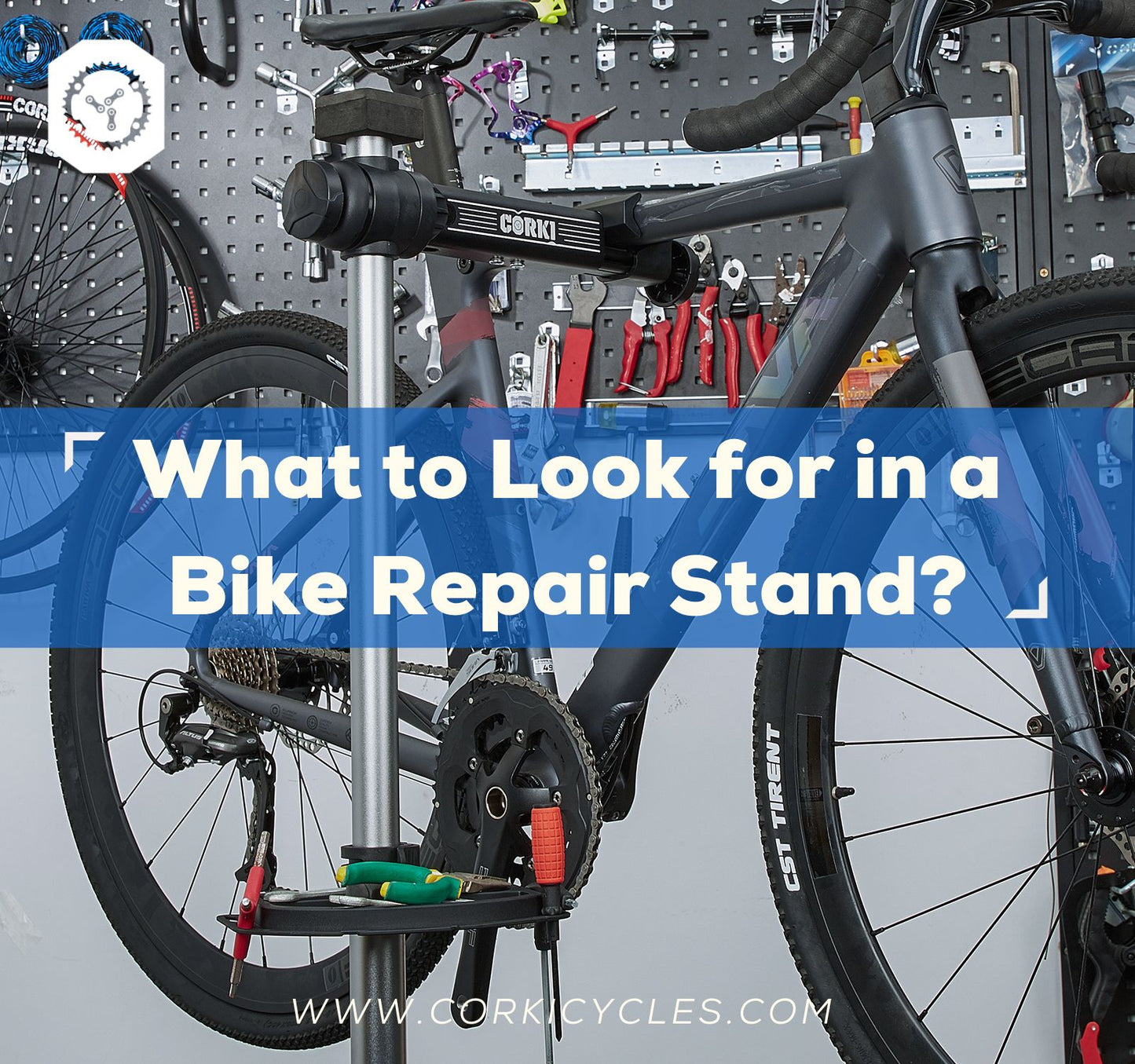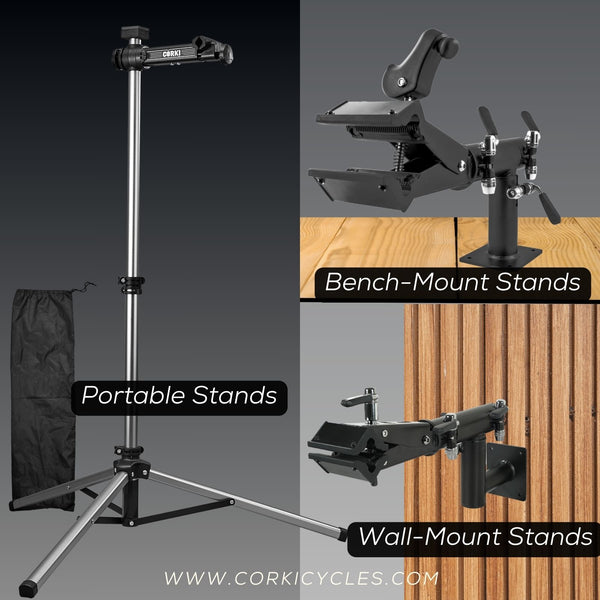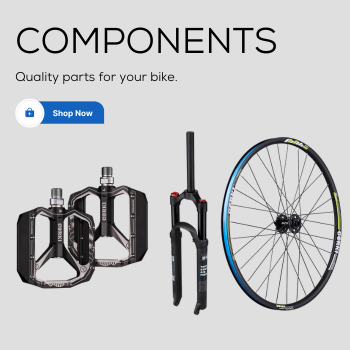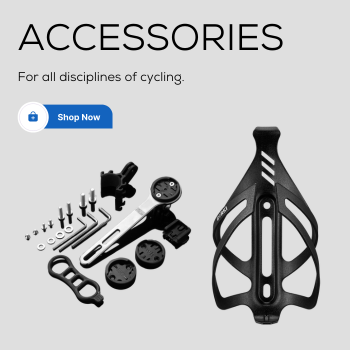
What to Look for in a Bike Repair Stand?
Hey there, fellow bikers! In this guide, we'll walk you through the essentials to help you choose the perfect bike repair stand for your bike and any additional bikes in the future.
If you're serious about keeping your two-wheeled companion in top-notch condition, a bike repair stand is your trusty sidekick. It can make maintenance tasks a breeze, from basic cleaning to intricate adjustments. But before you rush to buy one, it's essential to know what to look for in a bike repair stand to ensure it suits your needs. Let's roll into the world of bike stands!
- Why do you need a bike repair stand?
- Different types of bike repair stands (the pros and cons)
- What to look for in a bike repair stand?
Why do you need a bike repair stand?
Make things easier and cleaner
Working on a bike upside down can be challenging. You often have to awkwardly reach around the frame or bend over to access certain parts. It's very frustrating and time-consuming. But with a bike repair stand, you can securely lift and hold the bike. Then, you can easily rotate to access all the nooks and crannies.
Secure
When you're working on a bike on the ground, the bike is often unstable, which makes it difficult to work. A bike repair stand secures the bike so you can work on it more effectively. It can also secure the bike upside down, allowing you to work on the wheels and other components easily.
Maintenance
A bike repair stand helps you clean and fix your bike quickly and easily. You can use it to clean your bike chain, adjust your brakes, or fix minor problems in just a few minutes. This way, you can spend more time riding your bike and less time maintaining it.
Avoid back pain
Fixing your bike on the ground can hurt your back a lot, especially when bending and twisting. Bending over for a few hours is also tough on your back. But with a bike repair stand, you can raise the bike to a comfortable working height and avoid stressing your back, kneck, and knees.
Better mechanical advantage
A bike repair stand gives a mechanical advantage, making some jobs easier. For example, suppose you're trying to remove install a new crank. In that case, a bike repair stand allows you to apply more force to the tool, making it easier to loosen the nut or bolt. Also, wedging your knees to hold the front wheel and fit the new handlebar can be done simply with a bike repair stand.
Different types of bike repair stands: pros and cons

Bench-Mount Stands
Bench-mounted stands attach to a workbench or a wall and hold the bike by the seat post or the top tube. (Yet, fastening the tubing can harm your frame, so we recommend clamping the seat post.) They are an excellent choice if you have a dedicated workspace and don't plan to move. They are also typically the most affordable option.
Pros:
- Affordable
- Great for small workspaces
Cons:
- Requires a permanent mounting location
- Not portable
Portable Stands
A portable bike stand is easy to move around because it's not too heavy. You can fold it up and store it easily. It's great for taking on the go, like racing or riding on mountain trails. The stand has three legs to keep it steady and an arm that can hold your bike by the seat post and top tube.
Pros:
- Portable
- Easy to set up
- Stable
Cons:
- Not as sturdy as other types of stands
- Take up more floor space
- Some designs can be more challenging to adjust.
Wall-Mount Stands
Most repair stands are easy to move around. But wall-mounted stands stay in one place. Wall-mounted stands take up less space; you don't have to put them away when you're done using them. They can also store your bike when you're not riding it, which is an excellent alternative to hanging it from a hook.
Pros:
- Takes up minimal space
- Mounted at any height.
Cons:
- Not as stable as other types
- It may not be suitable for heavier bikes.
When choosing a bike repair stand, consider the bike's type, weight, and available workspace. Also, consider whether you'll use the stand at home or on the go.
What to look for in a bike repair stand?
When choosing a bike repair stand, here are a few key factors to help you decide before you buy:
Stability
To keep your bike safe while you work on it, you need a stand that can hold it steady. Generally, mounted repair stands are more stable than freestanding ones. And a three-legged tripod is a lot more stable than two-legged models.
Check if the feet of the stand are non-slip or have rubber pads. Non-slip feet keep the stand from sliding around, and rubber pads prevent scratches on your floor.
Clamp
When choosing a bike repair stand, consider the clamp that holds the bike in place. The clamp should keep the bike secure without damaging or scratching it.
A good clamp should have rubber or protective padding that won't scratch or damage the bike's frame. A quick-release clamp can be handy because you can easily move the bike around. But a screw-type clamp can hold the bike more tightly. Some stands have adjustable clamps that can fit different bikes.
You should check the stand's maximum and minimum clamping diameters to ensure it works with your bike.
Angle adjustment
Look for a stand that you can adjust, turn easily, and lock tightly. The stand should grab the bike in a way that makes it easy for you to reach all the bicycle components. For example, the Corki Cycles bike repair stand has 360° rotation, which means you can twist your bike 360 degrees to access any angle.

Portability
If you want to bring your repair stand with you when you ride or race, you need a stand that is easy to move around. Choose a stand that is simple to assemble and disassemble while also being strong enough to hold your bike. Some stands even come with a carrying/storage bag or case.
However, not all portable repair stands are the same. So deciding if you need a portable or permanent one should be based on your personal needs.
Load Capacity
If you have a heavy bike like an e-bike or dual-suspension mountain bike, make sure the repair stand you choose can hold its weight. Not all bike stands can load heavier bikes, so check before buying. Also, pay attention to the maximum and minimum heights the stand can work with, which can vary depending on the stand you choose.
Price
Bike repair stands come in a wide range of prices, from under $50 to over $500. Consider how often you'll use the stand and how much you're willing to spend. You don't necessarily need to spend a lot of money to get a good bike repair stand. Cheaper stands can work just fine for simple maintenance, even if they don't have as many fancy features as the more expensive ones.

Additional features
Some bike repair stands include extra features. Such as a built-in tool tray, beverage holder, carry bags, and wheel-truing stand attachments. Think about what you need in your bike maintenance routine. And don't forget to look for the ability to hold different types of bikes. Buy a good one, and buy it once!
Conclusion
A bike repair stand is essential for cyclists who want to maintain their bikes and have a better repair experience. When choosing a stand, consider its stability, adjustability, and portability. With a good bike repair stand and a regular maintenance routine, you can keep your bike in top shape and enjoy many miles of smooth, safe cycling. We hope this blog can help you find the right bike repair stand.




